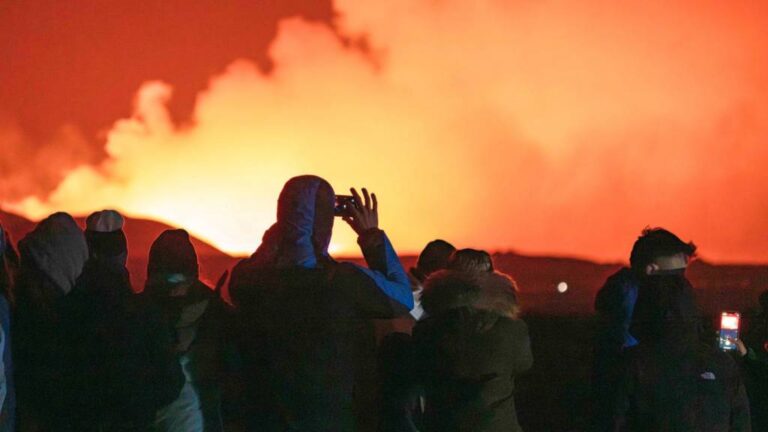Another volcanic eruption on the Reykjanes Peninsula in southern Iceland has prompted the declaration of a state of emergency, marking the fourth eruption in the region since December.
Considered the most potent eruption thus far, lava has breached the eastern defenses surrounding the evacuated town of Grindavik, as reported by local media outlets. Additionally, individuals have been relocated from the vicinity of the Blue Lagoon, a renowned tourist destination in Iceland.
Despite the volcanic activity, Iceland’s airspace remains operational. The eruption has resulted in a substantial lava flow, generating significant smoke emissions.
The eruption commenced around 20:00 local time (20:00 GMT) on Saturday, north of Grindavik, as confirmed by Iceland’s civil defense service. This eruption site closely resembles the location of the previous eruption that initiated on December 8th.
Video footage captured the eruption, depicting billowing clouds of smoke and molten magma seeping and frothing from fissures in the ground.
Fortunately, the eruption has not impacted the primary international airport, situated to the northwest of Grindavik.

According to geophysicist Magnus Tumi Gudmundsson, who conducted aerial surveys of the affected regions via helicopter, Saturday’s eruption stands out as the most formidable one observed thus far.
Reports indicate the movement of two lava streams toward the west and south directions. Local sources mentioned that lava from the southern stream had advanced to the eastern defensive barriers of Grindavik.
Mr. Gudmundsson also noted the possibility of lava flowing into the sea, although this outcome hinges on whether the volcanic activity subsides.
Einar Bessi Gestsson, a natural disaster expert at the Norwegian Meteorological Agency, warned Iceland’s public broadcaster RUV of potential dangers such as toxic gases and minor explosions if lava interacts with seawater.
Simultaneously, the westward movement of lava poses a threat to the Blue Lagoon and a geothermal power plant, which supplies hot water to most of the Reykjanes Peninsula.
According to the Icelandic Met Office, the current lava flow is “considerably broader” compared to February’s eruption, which also saw lava advancing in a similar direction.
Rikke Pedersen, the head of the Nordic Volcanological Centre in Reykjavik, informed Reuters that several protective barriers have been constructed around these facilities.
There is apprehension regarding the possible damage to fiber optic cables along the route, which could disrupt telecommunications and internet services.



























